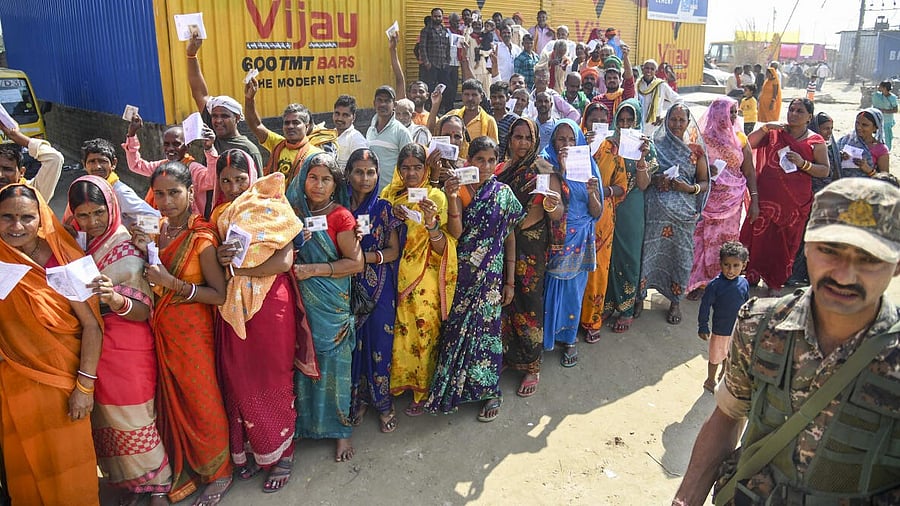
People queuing up to cast their votes outside a polling station at Danapur in Patna.
Credit: PTI Photo
Patna: Soon after the first phase of election was over in Bihar, where voting took place in 121 of the 243 constituencies on Thursday, the Election Commission proudly claimed that Bihar had recorded a highest-ever turnout at 64.66 per cent.
The EC had reasons to be happy. After all, it was the highest percentage since the first election held in 1951-52. And the Thursday figure had surpassed 62.57 per cent of the 2000 Assembly polls in undivided Bihar when the State had 324 seats.
While the EC’s morale is high after the record turnout, political parties across the fence are worried about what the huge turnout means.
Claims and counterclaims
The ruling party is claiming that the record turnout means women, like in the 2015 and 2020 elections, have rooted for the NDA in general and Chief Minister Nitish Kumar in particular. While the Opposition is claiming that record turnout is a vote against Nitish, and people want a desperate change in the regime.
“In 2015, 60.48 per cent of women voted compared with 53.32 per cent of men. In 2020, too, 56.69 per cent of women voters turned up to exercise their franchise as against 54.45 per cent of men. On both occasions, when women outnumbered men, Nitish became the Chief Minister. This time, his welfare measures for women, which include the recent Rs 10,000 cash transfer, have made women turn up in droves to vote for the NDA,” explained a senior ruling party leader.
However, Mahagathbandhan chief ministerial face Tejashwi Yadav has a different take. “The Mai-Behan Yojna, which we have announced for women, under which a woman will get Rs 30,000 annually (Rs 2,500 per month) from January 14, the auspicious Makar Sankranti day, has made women vote for the Mahagatbandhan. Besides, the youth, most of them who voted for the first time, appear to be rooting for a new government which would provide them jobs and check migration. A vote for change has helped the record turnout,” explained Tejashwi.
Expert's view
Political experts feel the record turnout was due to three prime reasons.
“The main reason was the Special Intensive Revision (SIR) carried out in Bihar, where the voters’ number came down from 7.9 crore to 7.4 crore. Once the bogus voters were weeded out, the polling percentage automatically increased,” said Giridhar Jha, editor of a national magazine.
To buttress his point, he cited statistics. “If earlier, suppose, out of 100 voters, 60 people turned up to vote, the polling percentage was 60 per cent. If after SIR, 10 bogus voters were weeded out of 100, then out of 90, if 60 turned up to vote, the polling percentage would be 66.66,” the expert explained.
The second important reason was that the polls were held soon after the much-revered Chhath festival, where the migrants usually come to Bihar. “This time, these migrants overstayed to cast their vote,” explained Jha, and added that whether these voters are backing the ruling camp or the Opposition alliance or have opted for Prashant Kishor’s Jan Suraaj would be known only after the result.
The third factor is the pleasant weather of November. “The Lok Sabha polls are held in the sultry summer months of April and May, while the Assembly polls are held in November. Weather makes a huge difference in the voter turnout,” averred the political scientist.